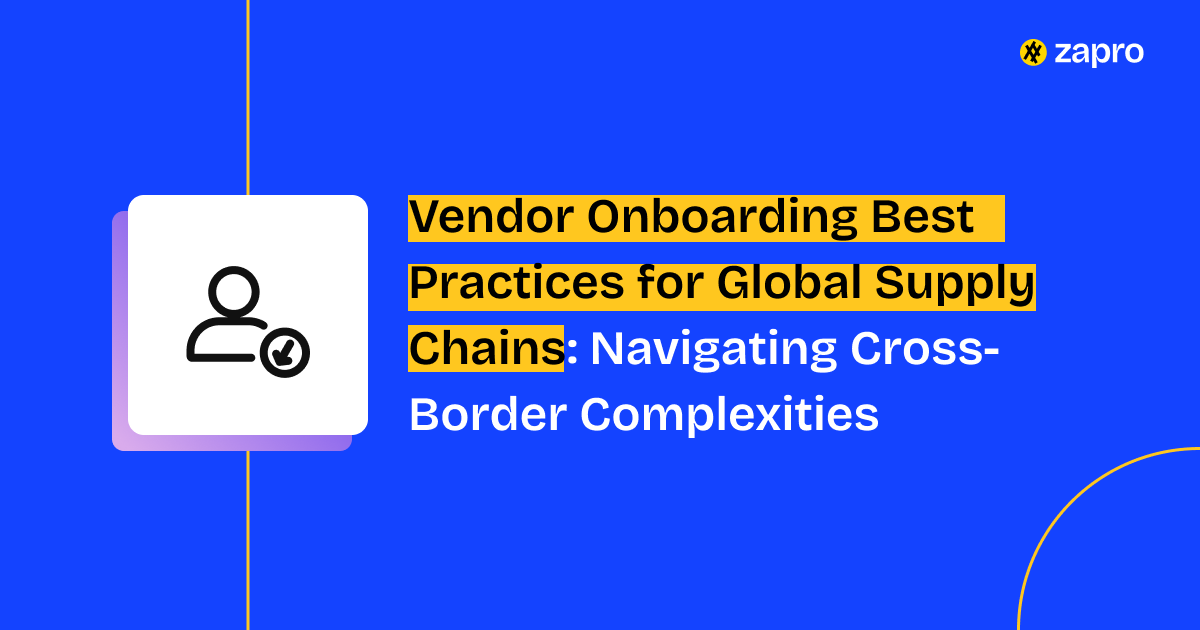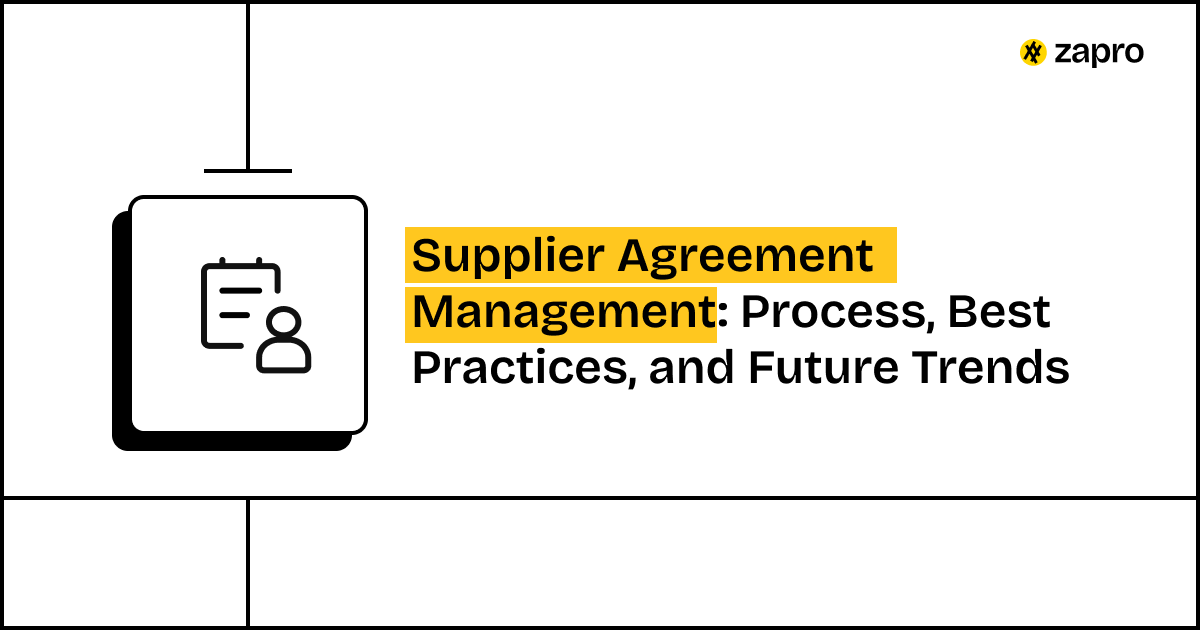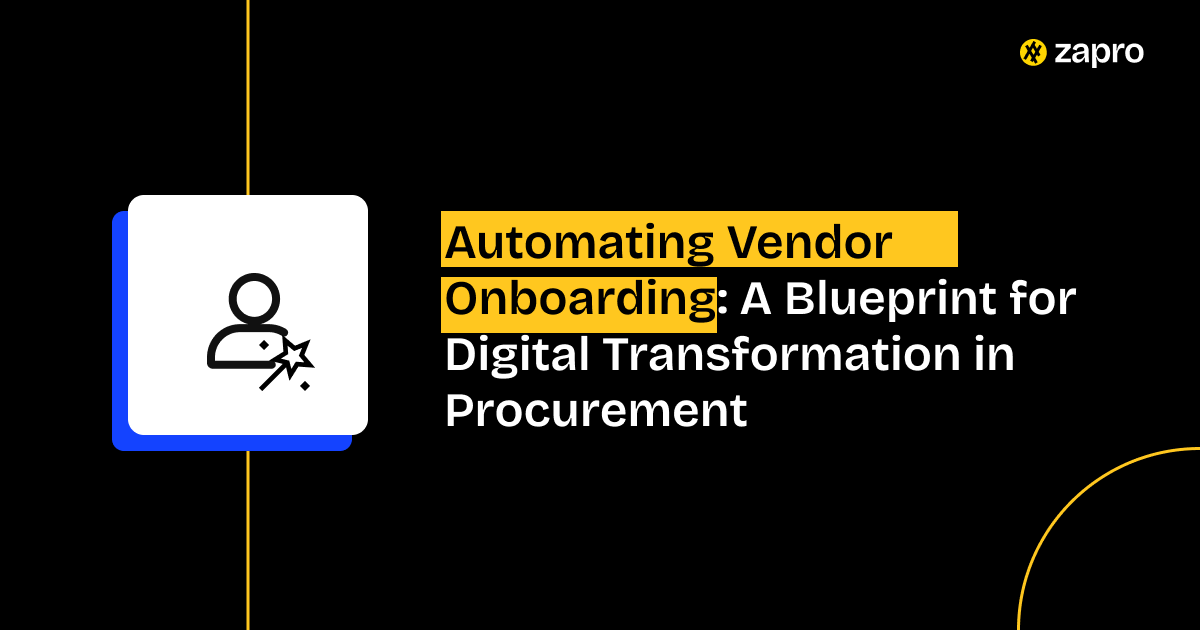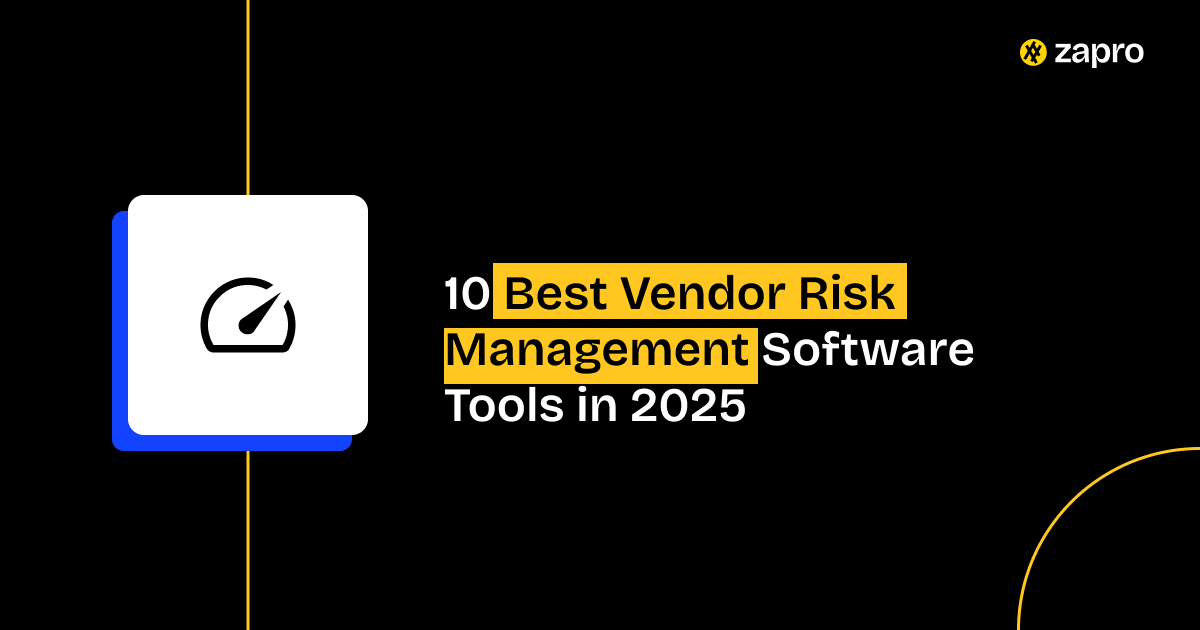Managing vendor onboarding within a single country is tough enough—when you take that process and spread it over different regions, regulatory environments, and languages, the difficulty level skyrockets. To adapt to the changing landscape of global supply chains, enterprises must restructure their onboarding procedures in such a way as to satisfy the compliance requirements of various jurisdictions, different tax regimes, cross-border data privacy regulations, and diverse cultural expectations.
The article presents vendor onboarding best practices globally that supply chains can use to facilitate the smooth onboarding of vendors across the border, meeting compliance standards of international vendors, and setting up vendors in multiple countries. In addition, it tells about the benefits that a solution like Zapro.ai may bring to a global supply chain when it comes to onboarding with its configurable workflows, language capabilities, and risk intelligence integration.
The Unique Challenges of Global Vendor Onboarding
Successful vendor onboarding in global supply chains is not simply about document collection and supplier activation in your ERP system. It involves the knowledge of international compliance requirements, data privacy rules, tax laws, payment preferences, and cultural factors that refer to communication and expectation and that come from different cultures.
Let’s explore the core challenges that global teams face.
Regulatory Compliance Across Jurisdictions
Each country imposes its own laws for business registration, tax reporting, product certifications, and import/export compliance. Ensuring international vendor compliance is a matter of finding one’s way through:
- Local tax identification requirements
- Import documentation (COO, HS codes, duty requirements)
- Anti-corruption laws (FCPA, UK Bribery Act)
- Trade sanctions and restricted party screenings
- Environmental and labor regulations
- Country-specific KYC/KYB documentation
Onboarding that is the same for everyone usually does not work. Compliance errors have the potential to put on hold the supplier activation process or to result in fines, blockage of shipments, and damage to the reputation of a company.
Data Privacy and Security Concerns
Data privacy rules such as GDPR, CCPA, LGPD, PDPA, and PIPL of China set very strict regulations on the way vendor information is gathered, different storage, processing, and transfer methods.
Key challenges include:
- Cross-border data transfer limitations
- Storage and encryption requirements
- Vendor data minimization rules
- Security controls for third-party risk
For multi-country vendor setup, centralized systems must ensure secure, compliant data flows across regions.
Currency, Taxation, and Payment Variances
Global suppliers operate across different financial infrastructures, leading to:
- Varying invoice formats
- Different payment rails (ACH, SEPA, SWIFT)
- Local tax systems (GST, VAT, withholding)
- Fluctuating currency exchange rates
- Region-specific bank documentation requirements
Without standardized processes, payments can fail or be delayed, eroding vendor trust.
Language and Cultural Barriers
Cross-border supplier onboarding requires more than translation—it demands true cultural intelligence.
Common barriers include:
- Misinterpretation of documentation or requests
- Differences in negotiation styles
- Varying expectations for timelines
- Different interpretations of compliance terminology
A vendor in Germany expects formal, precise communication. One in Japan may prioritize respect and consensus. A partner in Brazil may require more relationship-building. The onboarding approach must adapt accordingly.

“A report by Gartner estimated that companies that have automated onboarding solutions may reduce data entry errors by 50%.”
Learn about vendor onboarding tools.
Establishing a Global Vendor Onboarding Framework: Core Principles
Building a resilient global onboarding ecosystem requires a framework that balances consistency, adaptability, and compliance.
Below are the foundational pillars.
Centralized Policy, Decentralized Execution
A global organization needs centralized policies that set standards for:
- Mandatory KYC/KYB documentation
- Sanctions screening
- Data privacy requirements
- Vendor risk scoring
- Audit and governance reporting
But execution should be localized—regional teams should adapt workflows to:
- Local regulations
- Cultural norms
- Language preferences
- Documentation formats
Central oversight + local flexibility = scalable global onboarding.
Standardized Data Collection with Local Adaptations
A global vendor master requires consistency. Businesses should define:
- Core data fields to collect from all vendors
- Standard tax and identity documents
- Global risk assessment parameters
Then allow for localized data requirements, such as:
- PAN/GST in India
- EIN/W9/W8 in the U.S.
- SIREN/SIRET in France
- CPF/CNPJ in Brazil
This avoids incomplete vendor records and ensures regulatory compliance everywhere.
Multi-Language Support and Localization
True localization means:
- Multi-language forms and portals
- Region-specific help documentation
- Translated onboarding workflows
- Local-language customer support
Vendors must feel that the process respects their language and context. This is where platforms like Zapro.ai excel, offering out-of-the-box multi-language support.
Streamline Vendor Onboarding — Start Today!

Key Best Practices for Navigating Cross-Border Vendor Onboarding
Once a global framework is in place, organizations need actionable steps to streamline global supply chain onboarding and reduce risks.
1. Comprehensive Due Diligence (KYC/KYB)
Global KYC/KYB should include:
- Validation of business registration
- Beneficial ownership (UBO) verification
- Financial solvency checks
- ESG and ethical compliance checks
- Trade sanctions lists (OFAC, UN, EU, etc.)
- Adverse media screening
- Address and banking verification
Using third-party risk data feeds (integrated into platforms like Zapro.ai) ensures accuracy and reduces manual workload.
2. Leveraging Local Legal Counsel and Regional Experts
Local experts provide real-world insights on:
- Country-specific regulations
- Required licenses and permits
- Tax documentation
- Customs and import standards
- Cultural and communication nuances
This reduces risk and speeds up onboarding dramatically.
3. Secure Data Exchange and Storage
Protecting vendor information is crucial for compliance and reputation. Best practices include:
- Encrypted document upload channels
- Role-based access controls
- Zero-trust architecture
- Secure API integrations
- Data residency controls
- Regular vulnerability assessments
Centralized vendor management systems help enforce these standards globally.
4. Streamlining International Payments
Delayed payments are the #1 cause of supplier dissatisfaction.
Global onboarding should capture:
- Local banking formats (IBAN, SWIFT, routing numbers)
- Tax IDs and withholding requirements
- Currency preferences
- Preferred payment terms
- Country-specific bank validations
A strong system automates payment compliance checks to prevent errors.
5. Effective Communication Strategies
Cross-border supplier onboarding succeeds when communication is transparent.
Best practices include:
- Automated multilingual notifications
- Region-specific onboarding playbooks
- Dedicated vendor support channels
- Vendor self-service portals
- Clear SLAs and response timelines
Clear communication builds trust faster across diverse markets.
Technology as an Enabler: Zapro.ai for Global Onboarding
Robust technology is a must for modern global onboarding. Manual processes are not able to scale across regions and regulations.
Zapro.ai offers a global-first vendor management platform which is sensitive to multi-country compliance, language, and risk requirements.
Configurable Workflows for Regional Compliance
Zapro.ai ensures each region has its own:
- Document collections
- Screening workflows
- Regulatory checks
- Approval hierarchies
—all within a unified global system.
Multi-Currency and Multi-Language Capabilities
The platform supports:
- 20+ languages
- Multi-currency invoice processing
- Localized vendor portals
- Region-specific validation rules
This removes friction for international vendors.
Integrated Third-Party Risk Data Feeds
Zapro.ai pulls in:
- Sanctions lists
- PEP checks
- Adverse media
- Beneficial ownership data
- ESG risk indicators
This ensures consistent global compliance.
Centralized Audit Trails for Global Governance
Every action—approval, upload, validation—is logged in a unified audit trail:
- Easier audits
- Better traceability
- Global reporting consistency
- Simplified compliance documentation
This brings governance and transparency to global onboarding.
Overcoming Common Pitfalls in Global Vendor Integration
Even with strong systems, organizations often stumble at predictable points:
- Inconsistent documentation standards across regions
- Manual data entry causing delays and errors
- Lack of centralized visibility for global onboarding
- Unclear accountability between global and local teams
- Poor communication with non-English-speaking vendors
Solving these challenges requires automation, clear roles, global frameworks, and multi-language support—areas where platforms like Zapro.ai excel.
Building a Resilient Global Supply Chain from Onboarding Onwards
Vendor onboarding is the beginning of your global supplier relationship—not a checkbox task. When done right, it:
- Improves compliance across regions
- Speeds up procurement cycles
- Strengthens supplier trust
- Reduces risk exposure
- Enhances operational efficiency
- Builds transparency across your global supply chain
A resilient supply chain begins with a strong onboarding foundation.
Key Takeaways
- Global vendor onboarding is complex, requiring attention to regulatory, cultural, and technological differences.
- Centralized governance with localized execution is the most effective model.
- Data privacy laws (GDPR, CCPA, etc.) must guide every step of the onboarding process.
- Multi-language and multi-currency support is non-negotiable for cross-border vendors.
- Due diligence and third-party risk checks are critical for international vendor compliance.
- Technology platforms like Zapro.ai streamline workflows, automate compliance, and enhance global governance.
- Consistent, compliant onboarding strengthens vendor relationships and supports long-term supply chain resilience.
Conclusion
Vendor onboarding for global supply chains is much more than just collecting paperwork, it is a complex, multi-layered process that is affected by foreign regulations, cultural differences, and cross-border compliance issues. Companies that spend money on standardized frameworks, local implementation, and advanced onboarding technology, thus, become more competitive.
Such global vendor onboarding becomes scalable, secure, and fully compliant with the help of platforms like Zapro.ai, thus, enabling procurement leaders to engage suppliers worldwide with confidence. The ones that create structured and flexible onboarding ecosystems will be the companies that can grow, innovate, and survive as the global supply chains keep changing.

Smart Vendor Onboarding, Faster Approvals
Fast, compliant, and simplified vendor onboarding with Zapro.
Don’t miss our weekly updates
We’ll email you 1-3 times per week—and never share your information.

 Healthcare
Healthcare Financial Services
Financial Services Technology
Technology Venture Capitalist
Venture Capitalist Chief Procurement Officer
Chief Procurement Officer Chief Financial Officer
Chief Financial Officer




